42nd Infantry Division (United States) on:
[Wikipedia]
[Google]
[Amazon]
The 42nd Infantry Division (42ID) ("Rainbow") is a

 The 42nd Division adopted a
The 42nd Division adopted a
 *Casualties: total 14,683 (KIA – 2,058; WIA – 12,625).
*Commanders: MG W. A. Mann (5 September 1917), Brig. Gen. Charles T. Menoher (19 December 1917), Maj. Gen. Charles D. Rhodes, (7 November 1918), Brig. Gen.
*Casualties: total 14,683 (KIA – 2,058; WIA – 12,625).
*Commanders: MG W. A. Mann (5 September 1917), Brig. Gen. Charles T. Menoher (19 December 1917), Maj. Gen. Charles D. Rhodes, (7 November 1918), Brig. Gen.

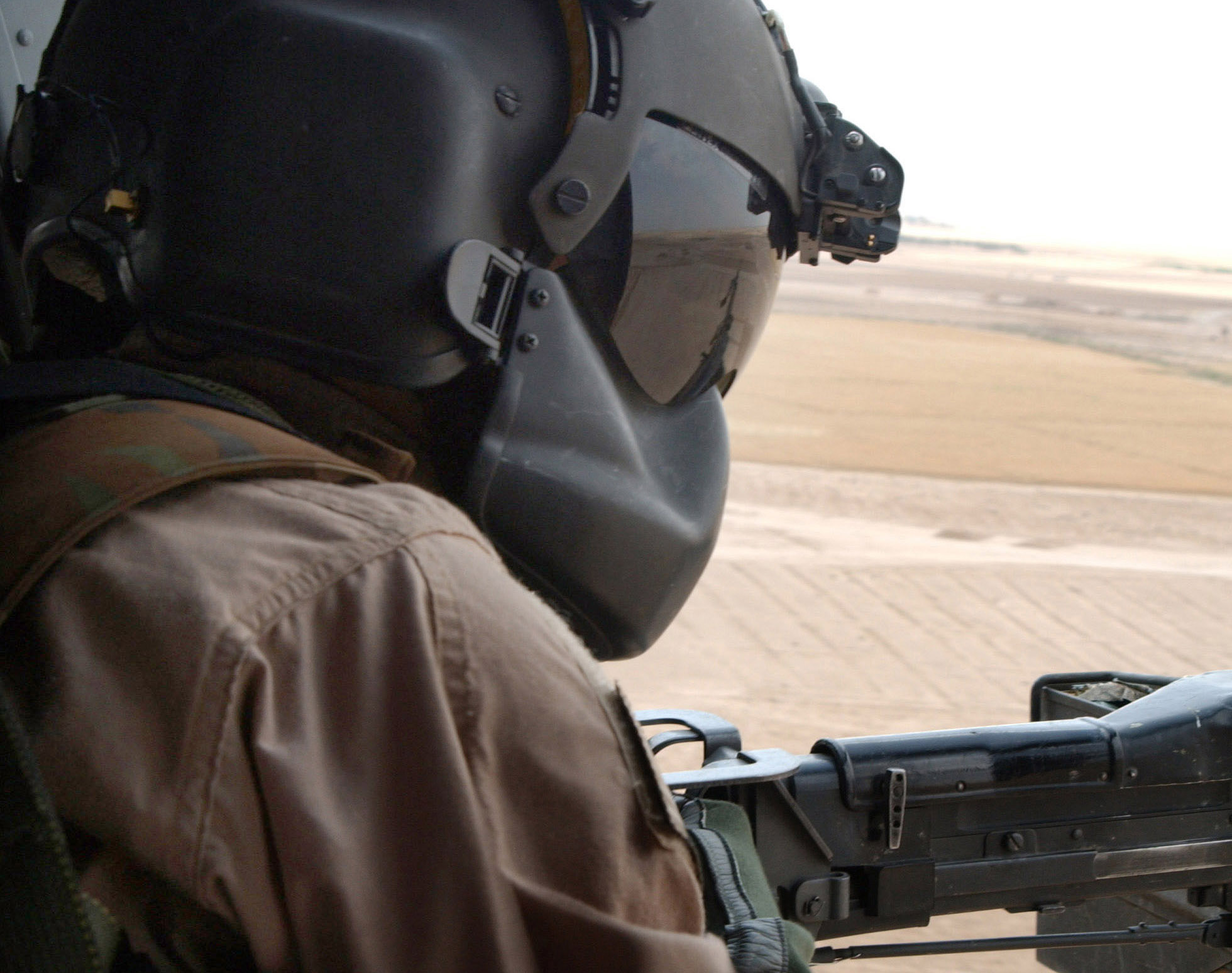 The 2/108th Infantry deployed to Iraq in 2004. In 2004–05, the 1/69 Infantry served in Iraq, eventually providing security on the Baghdad International Airport (BIAP) Road. The 42nd Combat Aviation Brigade also deployed to Iraq during this period.
In 2004, the division headquarters and division troops of the 42nd Infantry Division deployed as part of Operation Iraqi Freedom (OIF) III, relieving the 1st Infantry Division (1ID). The division controlled the north-central Iraq area of operations. Serving as the command and control (C2) of Task Force Liberty, the 42ID took over responsibility for the area known as Multi-National Division North Central (MND-NC) including the provinces of Saladin Governorate, Saladin, Diyala Governorate, Diyala, At Ta'amim (Kirkuk Governorate, Kirkuk) and As Sulymaniah from the 1st Infantry Division on 14 February 2005. The 42ID directed the operations of: 1st BCT, 3rd Infantry Division (United States), 3ID; 3rd BCT, 3rd Infantry Division (United States), 3ID; the 278th RCT; 3rd- 313rd Field Artillery, 56th BCT (Texas Army National Guard); and the 116th Cavalry Brigade Combat Team (Idaho Army National Guard, Idaho, Oregon, and Montana Army National Guard). Soldiers conducted combat actions and raids, seized weapons caches, destroyed improvised explosive devices (IEDs), trained Iraqi army forces, and worked on reconstruction to ensure free elections. 1–69th Infantry of the 42ID manned the checkpoint where Italian SISMI officer Nicola Calipari was shot and killed.
Maj. Gen. Joseph J. Taluto, commanding general of the division during its deployment, commended the many contributions of the 42ID led Task Force Liberty. Vice Chief of Staff of the Army (VCSA), Gen. Richard Cody, saluted members of the 42ID at the unit's homecoming ceremony. The division's Headquarters and Headquarters Company was awarded the Army Meritorious Unit Commendation for its service in Iraq.
In 2008, 26 company-sized elements of the 50th Infantry Brigade Combat Team (United States), 50th Infantry Brigade Combat Team (IBCT), headquartered at Fort Dix, New Jersey, deployed to Iraq bringing the total number of NJ National Guard soldiers sent to Iraq and Afghanistan to over 3,200. These elements of the 50th IBCT were mobilized for one year, including stateside training and "boots on the ground" in theater. Premobilization training began in 2007 and took place in New Jersey, with further OIF specific preparation conducted at other Army installations out-of-state. Originally slated to deploy to Iraq in 2010, these elements deployed earlier as a result of changes needed to comply with new Department of Defense (DoD) policies. Earlier, in 2007, the DoD had reduced the amount of time units spend overseas in a combat theater, which in turn shifted mobilization schedules and required earlier deployments than anticipated. Elements of the 50th IBCT had deployed in support of Operation Iraqi Freedom (OIF) previously in 2004.
In 2008, the 27th Infantry Brigade Combat Team (IBCT), headquartered in Syracuse, New York, was mobilized and deployed to Afghanistan to train Afghan National Army (ANA) and police forces. Initial personnel from the 27th IBCT deployed in late 2007, with the majority of the approximately 1,700 service members deployed by mid-2008.
In conjunction around February 2008, soldiers of the 86th Infantry Brigade Combat Team were beginning to receive notification of their upcoming deployment. The Brigade Commander at the time was Colonel William F. Roy. In 2009, the brigade did a rotation at JRTC in Fort Polk, LA. In December 2009, the brigade was officially mobilized and to report to Camp Atterbury, IN. While in Indiana, the brigade trained and prepped for their future deployment to Afghanistan. After receiving numerous replacements and volunteer soldiers, the brigade was sent back to JRTC for one more rotation before they left the country.
The majority of the brigade landed in Afghanistan in early March. The brigade headquarters was on Bagram Airfield in RC-East. The brigade was tasked with numerous missions across eastern Afghanistan. The missions included partnering with the Afghan National Security Forces (ANSF), assisting in the Government of the Afghanistan, Islamic Republic of Afghanistan, and securing over 30,000 soldiers on Bagram Airfield while ensuring the base was continuing its daily operations. The brigade left Afghanistan in early December returning to Camp Atterbury, IN. The brigade was released from federal service and returned to the northeast to continue their respective state missions. Several component units of the brigade were awarded the Meritorious Unit Commendation for their service from 8 March 2010 – 4 December 2010 while deployed in support of Operation Enduring Freedom.
The 2/108th Infantry deployed to Iraq in 2004. In 2004–05, the 1/69 Infantry served in Iraq, eventually providing security on the Baghdad International Airport (BIAP) Road. The 42nd Combat Aviation Brigade also deployed to Iraq during this period.
In 2004, the division headquarters and division troops of the 42nd Infantry Division deployed as part of Operation Iraqi Freedom (OIF) III, relieving the 1st Infantry Division (1ID). The division controlled the north-central Iraq area of operations. Serving as the command and control (C2) of Task Force Liberty, the 42ID took over responsibility for the area known as Multi-National Division North Central (MND-NC) including the provinces of Saladin Governorate, Saladin, Diyala Governorate, Diyala, At Ta'amim (Kirkuk Governorate, Kirkuk) and As Sulymaniah from the 1st Infantry Division on 14 February 2005. The 42ID directed the operations of: 1st BCT, 3rd Infantry Division (United States), 3ID; 3rd BCT, 3rd Infantry Division (United States), 3ID; the 278th RCT; 3rd- 313rd Field Artillery, 56th BCT (Texas Army National Guard); and the 116th Cavalry Brigade Combat Team (Idaho Army National Guard, Idaho, Oregon, and Montana Army National Guard). Soldiers conducted combat actions and raids, seized weapons caches, destroyed improvised explosive devices (IEDs), trained Iraqi army forces, and worked on reconstruction to ensure free elections. 1–69th Infantry of the 42ID manned the checkpoint where Italian SISMI officer Nicola Calipari was shot and killed.
Maj. Gen. Joseph J. Taluto, commanding general of the division during its deployment, commended the many contributions of the 42ID led Task Force Liberty. Vice Chief of Staff of the Army (VCSA), Gen. Richard Cody, saluted members of the 42ID at the unit's homecoming ceremony. The division's Headquarters and Headquarters Company was awarded the Army Meritorious Unit Commendation for its service in Iraq.
In 2008, 26 company-sized elements of the 50th Infantry Brigade Combat Team (United States), 50th Infantry Brigade Combat Team (IBCT), headquartered at Fort Dix, New Jersey, deployed to Iraq bringing the total number of NJ National Guard soldiers sent to Iraq and Afghanistan to over 3,200. These elements of the 50th IBCT were mobilized for one year, including stateside training and "boots on the ground" in theater. Premobilization training began in 2007 and took place in New Jersey, with further OIF specific preparation conducted at other Army installations out-of-state. Originally slated to deploy to Iraq in 2010, these elements deployed earlier as a result of changes needed to comply with new Department of Defense (DoD) policies. Earlier, in 2007, the DoD had reduced the amount of time units spend overseas in a combat theater, which in turn shifted mobilization schedules and required earlier deployments than anticipated. Elements of the 50th IBCT had deployed in support of Operation Iraqi Freedom (OIF) previously in 2004.
In 2008, the 27th Infantry Brigade Combat Team (IBCT), headquartered in Syracuse, New York, was mobilized and deployed to Afghanistan to train Afghan National Army (ANA) and police forces. Initial personnel from the 27th IBCT deployed in late 2007, with the majority of the approximately 1,700 service members deployed by mid-2008.
In conjunction around February 2008, soldiers of the 86th Infantry Brigade Combat Team were beginning to receive notification of their upcoming deployment. The Brigade Commander at the time was Colonel William F. Roy. In 2009, the brigade did a rotation at JRTC in Fort Polk, LA. In December 2009, the brigade was officially mobilized and to report to Camp Atterbury, IN. While in Indiana, the brigade trained and prepped for their future deployment to Afghanistan. After receiving numerous replacements and volunteer soldiers, the brigade was sent back to JRTC for one more rotation before they left the country.
The majority of the brigade landed in Afghanistan in early March. The brigade headquarters was on Bagram Airfield in RC-East. The brigade was tasked with numerous missions across eastern Afghanistan. The missions included partnering with the Afghan National Security Forces (ANSF), assisting in the Government of the Afghanistan, Islamic Republic of Afghanistan, and securing over 30,000 soldiers on Bagram Airfield while ensuring the base was continuing its daily operations. The brigade left Afghanistan in early December returning to Camp Atterbury, IN. The brigade was released from federal service and returned to the northeast to continue their respective state missions. Several component units of the brigade were awarded the Meritorious Unit Commendation for their service from 8 March 2010 – 4 December 2010 while deployed in support of Operation Enduring Freedom.
''Los Angeles Times'', 8 April 2010, 15 March 2013
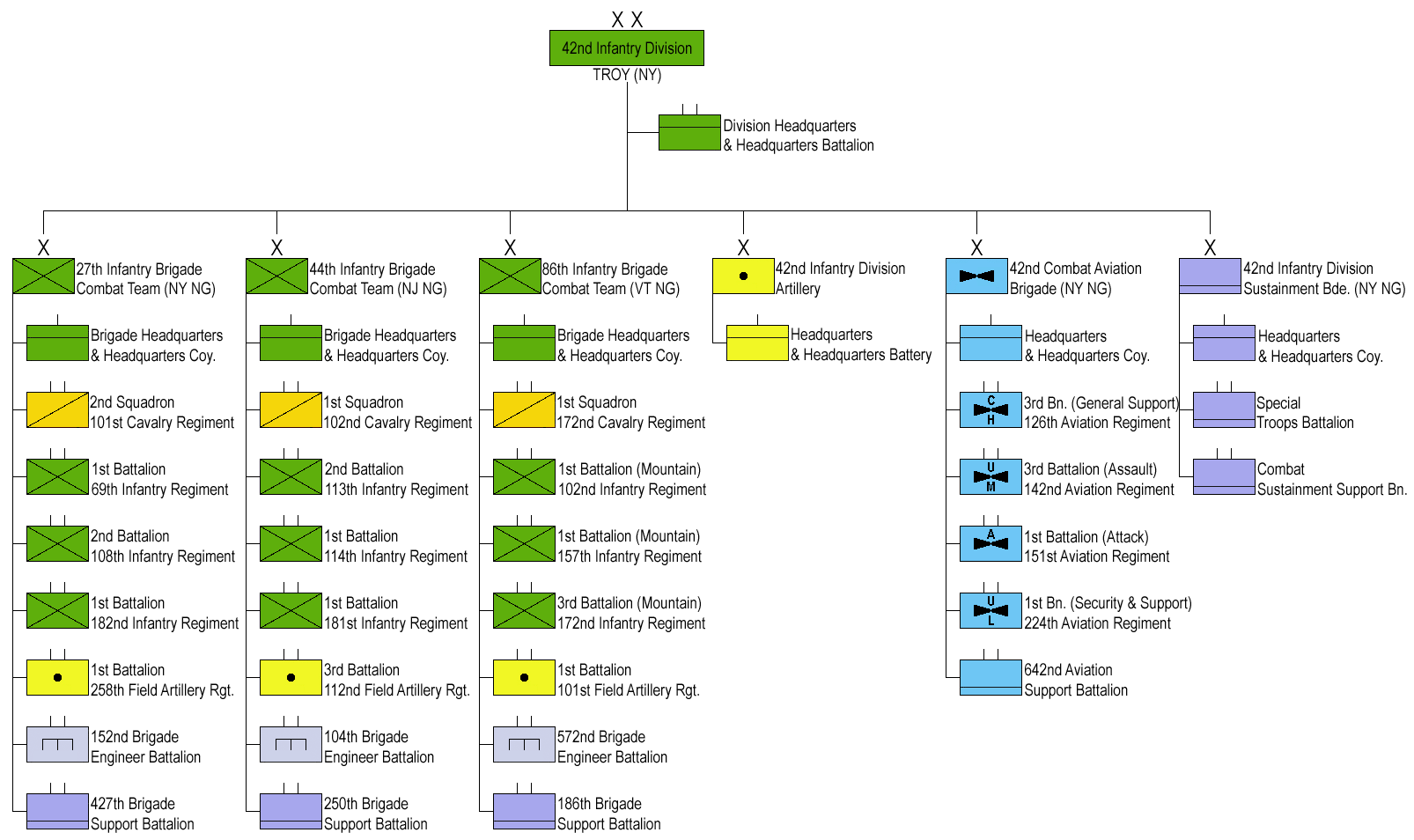
 42nd Infantry Division exercises training and readiness oversight of the following units, but they are not organic: There is a division level special troops battalion, three infantry brigade combat teams, a combat aviation brigade and an attached maneuver enhancement brigade as well as a field artillery brigade along with a sustainment brigade.
*
42nd Infantry Division exercises training and readiness oversight of the following units, but they are not organic: There is a division level special troops battalion, three infantry brigade combat teams, a combat aviation brigade and an attached maneuver enhancement brigade as well as a field artillery brigade along with a sustainment brigade.
*  Special Troops Battalion, 42nd Infantry Division
*
Special Troops Battalion, 42nd Infantry Division
*  27th Infantry Brigade Combat Team (United States), 27th Infantry Brigade Combat Team (IBCT) (New York Army National Guard, NY NG)
**Headquarters and Headquarters Company (HHC)
**
27th Infantry Brigade Combat Team (United States), 27th Infantry Brigade Combat Team (IBCT) (New York Army National Guard, NY NG)
**Headquarters and Headquarters Company (HHC)
** 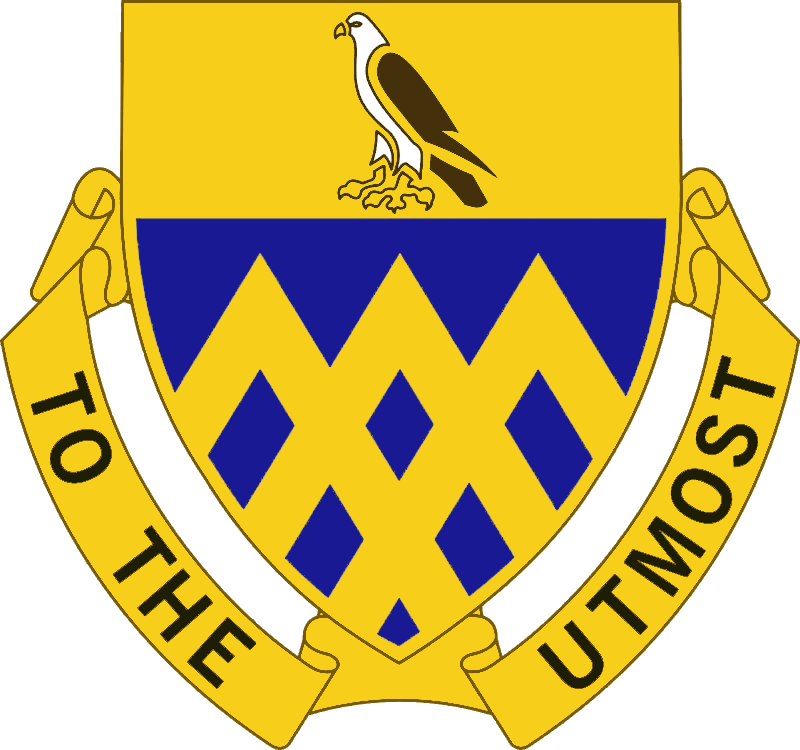 2nd Squadron, 101st Cavalry Regiment (United States), 101st Cavalry Regiment (Reconnaissance, surveillance, and target acquisition (United States), Reconnaissance Surveillance and Target Acquisition (RSTA))
**
2nd Squadron, 101st Cavalry Regiment (United States), 101st Cavalry Regiment (Reconnaissance, surveillance, and target acquisition (United States), Reconnaissance Surveillance and Target Acquisition (RSTA))
**  1st Battalion, 69th Infantry Regiment (New York), 69th Infantry Regiment
**
1st Battalion, 69th Infantry Regiment (New York), 69th Infantry Regiment
**  2nd Battalion, 108th Infantry Regiment (United States), 108th Infantry Regiment
**
2nd Battalion, 108th Infantry Regiment (United States), 108th Infantry Regiment
**  1st Battalion, 182nd Infantry Regiment (United States), 182nd Infantry Regiment (Massachusetts National Guard, MA NG)
**
1st Battalion, 182nd Infantry Regiment (United States), 182nd Infantry Regiment (Massachusetts National Guard, MA NG)
**  1st Battalion, 258th Field Artillery Regiment (United States), 258th Field Artillery Regiment (FAR)
** 152nd Brigade Engineer Battalion (BEB)
** 427th Brigade Support Battalion (BSB)
*
1st Battalion, 258th Field Artillery Regiment (United States), 258th Field Artillery Regiment (FAR)
** 152nd Brigade Engineer Battalion (BEB)
** 427th Brigade Support Battalion (BSB)
*  44th Infantry Brigade Combat Team (United States), 44th IBCT (New Jersey National Guard, NJ NG)
**HHC
**
44th Infantry Brigade Combat Team (United States), 44th IBCT (New Jersey National Guard, NJ NG)
**HHC
**  1st Squadron, 102nd Cavalry Regiment (United States), 102nd Cavalry Regiment (RSTA)
**
1st Squadron, 102nd Cavalry Regiment (United States), 102nd Cavalry Regiment (RSTA)
**  2nd Battalion, 113th Infantry Regiment (United States), 113th Infantry Regiment
**
2nd Battalion, 113th Infantry Regiment (United States), 113th Infantry Regiment
**  1st Battalion, 114th Infantry Regiment (United States), 114th Infantry Regiment
**
1st Battalion, 114th Infantry Regiment (United States), 114th Infantry Regiment
** 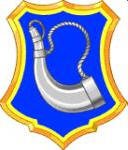 1st Battalion, 181st Infantry Regiment (United States), 181st Infantry Regiment (Massachusetts National Guard, MA NG)
**
1st Battalion, 181st Infantry Regiment (United States), 181st Infantry Regiment (Massachusetts National Guard, MA NG)
** 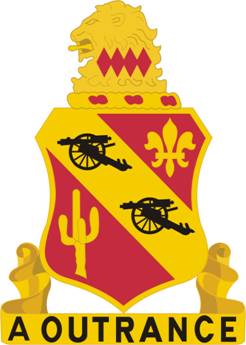 3rd Battalion, 112th Field Artillery Regiment (United States), 112th FAR
** 104th BEB
** 250th BSB
*
3rd Battalion, 112th Field Artillery Regiment (United States), 112th FAR
** 104th BEB
** 250th BSB
*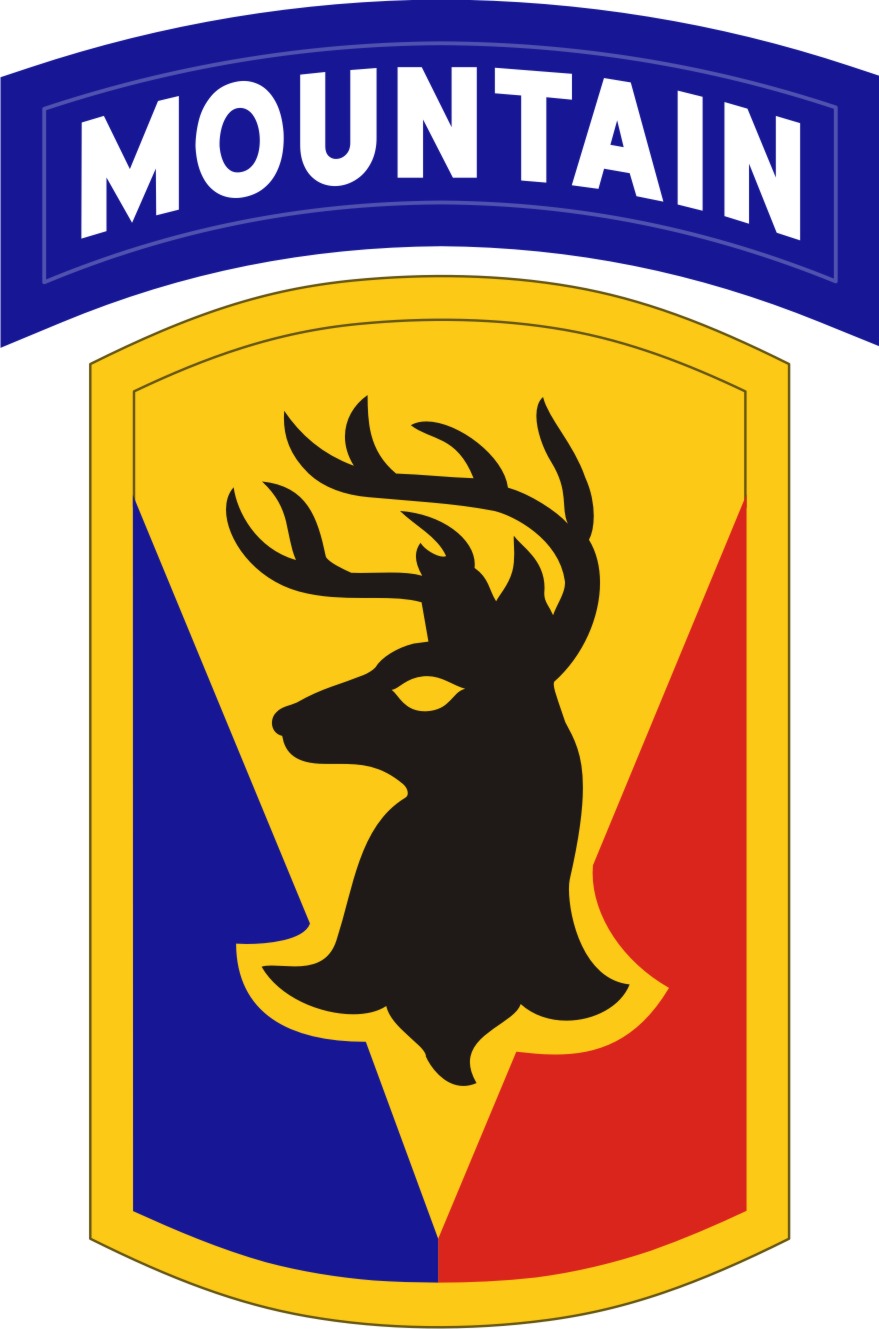 86th Infantry Brigade Combat Team, 86th IBCT (Mountain) (Vermont National Guard, VT NG)
**
86th Infantry Brigade Combat Team, 86th IBCT (Mountain) (Vermont National Guard, VT NG)
** HHC
**
HHC
** 1st Squadron, 172nd Cavalry Regiment (RSTA)
**
1st Squadron, 172nd Cavalry Regiment (RSTA)
**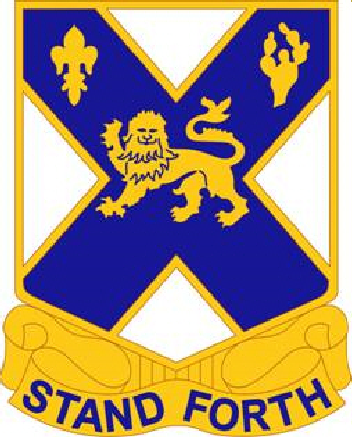 1st Battalion, 102nd Infantry Regiment (United States), 102nd Infantry Regiment (Mountain) (Connecticut National Guard, CT NG)
**
1st Battalion, 102nd Infantry Regiment (United States), 102nd Infantry Regiment (Mountain) (Connecticut National Guard, CT NG)
** 1st Battalion, 157th Infantry Regiment (United States), 157th Infantry Regiment (Mountain) (Colorado National Guard, CO NG)
**
1st Battalion, 157th Infantry Regiment (United States), 157th Infantry Regiment (Mountain) (Colorado National Guard, CO NG)
**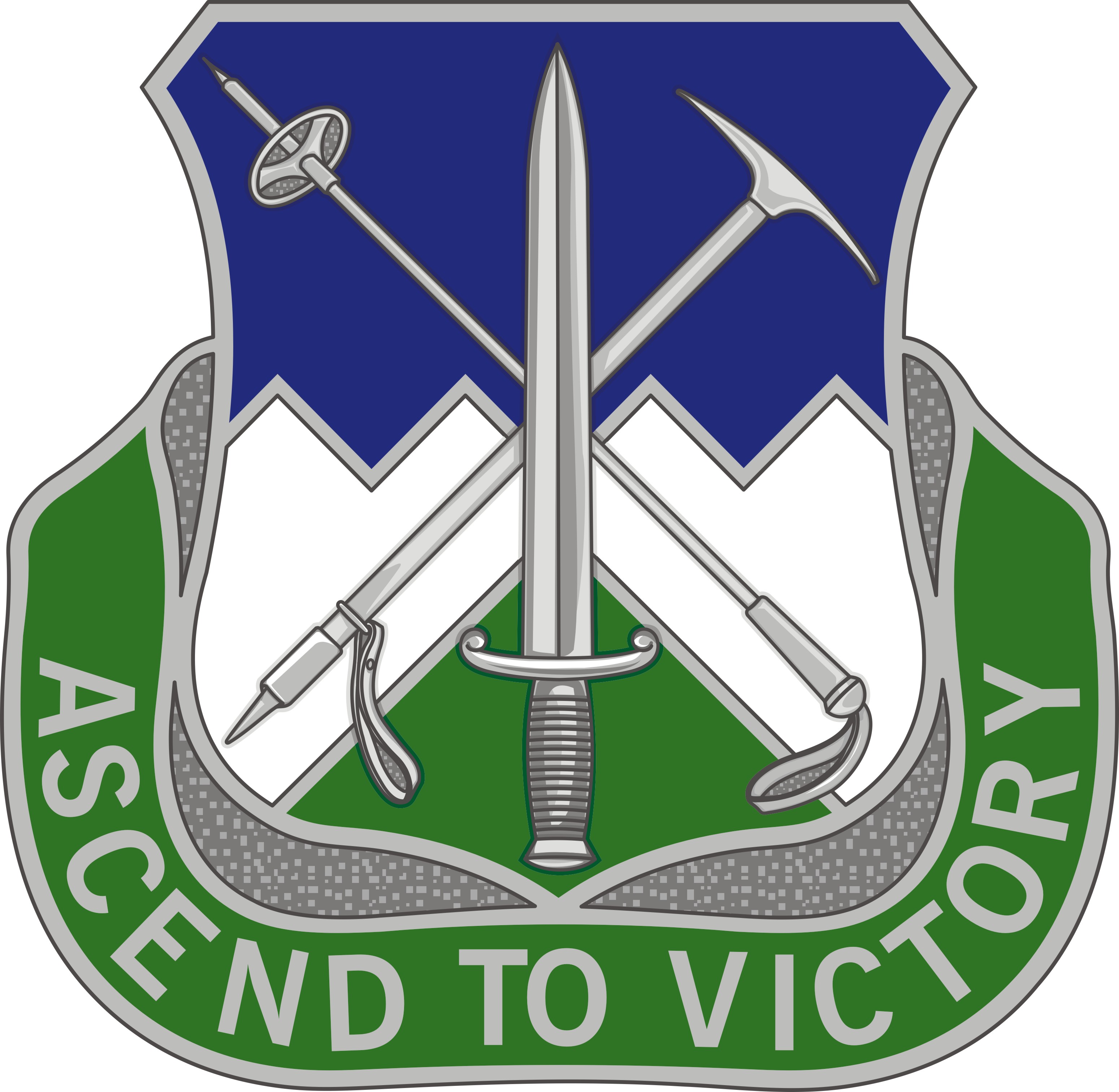 3rd Battalion, 172nd Infantry Regiment (United States), 172nd Infantry Regiment (Mountain) (Vermont National Guard, VT NG & New Hampshire National Guard, NH NG & Maine National Guard, ME NG)
**
3rd Battalion, 172nd Infantry Regiment (United States), 172nd Infantry Regiment (Mountain) (Vermont National Guard, VT NG & New Hampshire National Guard, NH NG & Maine National Guard, ME NG)
** 1st Battalion, 101st Field Artillery Regiment, 101st FAR (Massachusetts National Guard, MA NG & Vermont National Guard, VT NG)
**
1st Battalion, 101st Field Artillery Regiment, 101st FAR (Massachusetts National Guard, MA NG & Vermont National Guard, VT NG)
**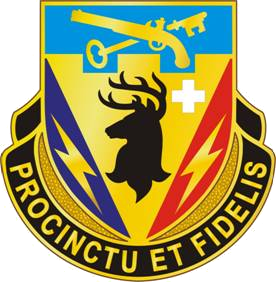 572nd BEB
**
572nd BEB
**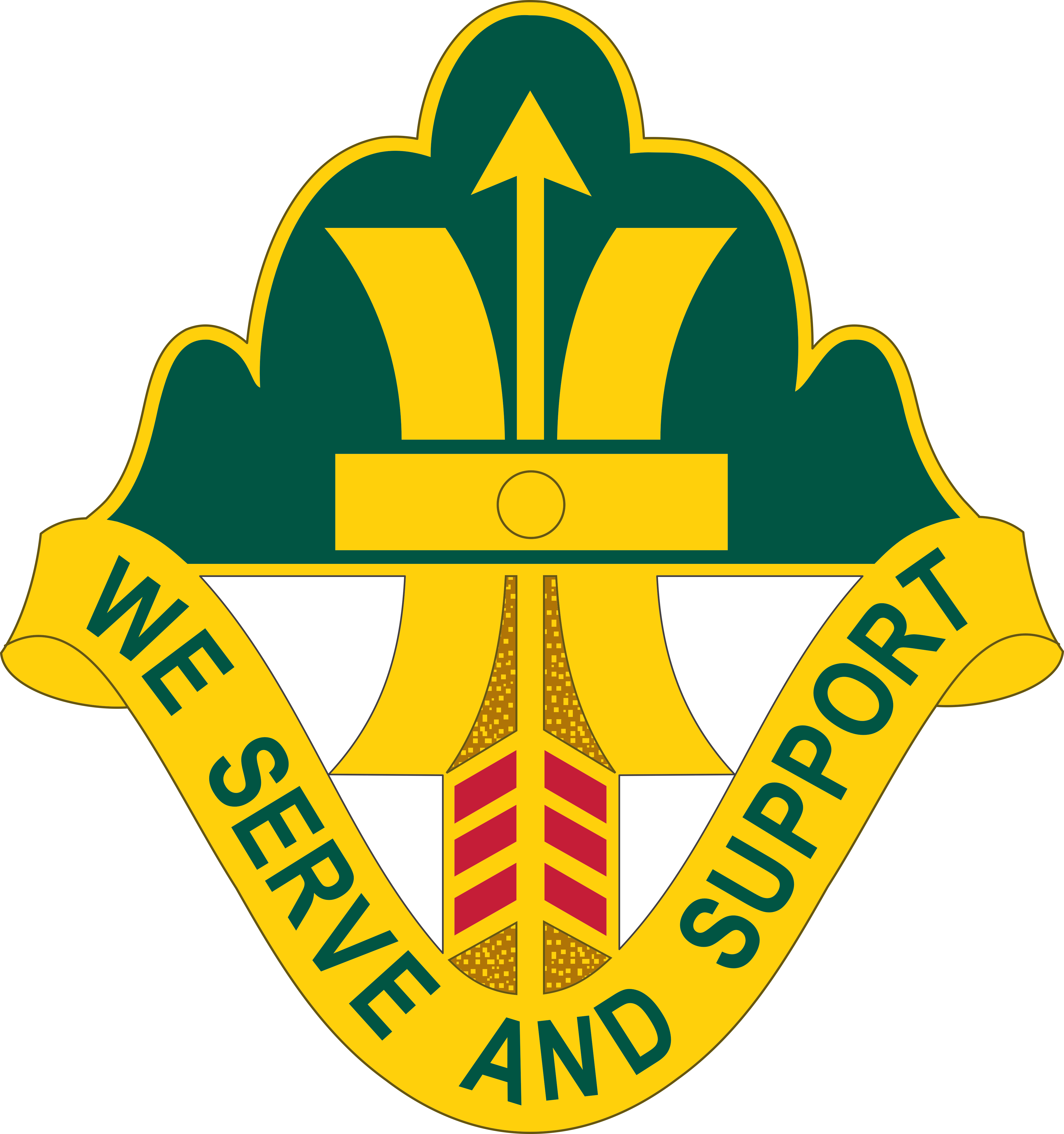 186th BSB
* 42nd Combat Aviation Brigade, Combat Aviation Brigade, 42d Infantry Division (CAB) (New York Army National Guard, NY NG)
** HHC
**
186th BSB
* 42nd Combat Aviation Brigade, Combat Aviation Brigade, 42d Infantry Division (CAB) (New York Army National Guard, NY NG)
** HHC
** 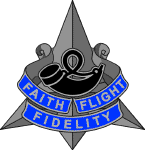 3rd Battalion (General Support), 126th Aviation Regiment (United States), 126th Aviation Regiment (Massachusetts National Guard, MA NG & Vermont National Guard, VT NG & Maryland National Guard, MD NG)
**
3rd Battalion (General Support), 126th Aviation Regiment (United States), 126th Aviation Regiment (Massachusetts National Guard, MA NG & Vermont National Guard, VT NG & Maryland National Guard, MD NG)
**  1st Battalion (Attack/Recon), 151st Aviation Regiment (United States), 151st Aviation Regiment
**
1st Battalion (Attack/Recon), 151st Aviation Regiment (United States), 151st Aviation Regiment
**  3rd Battalion (Assault), 142nd Aviation Regiment (United States), 142nd Aviation Regiment
** 642nd Aviation Support Battalion
3rd Battalion (Assault), 142nd Aviation Regiment (United States), 142nd Aviation Regiment
** 642nd Aviation Support Battalion
 26th Maneuver Enhancement Brigade (Massachusetts National Guard, MA ARNG)
**
26th Maneuver Enhancement Brigade (Massachusetts National Guard, MA ARNG)
** 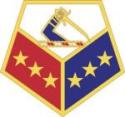 HHC
**
HHC
**  Network Signal Company
*
Network Signal Company
*  197th Field Artillery Brigade (NH ARNG)
**
197th Field Artillery Brigade (NH ARNG)
** 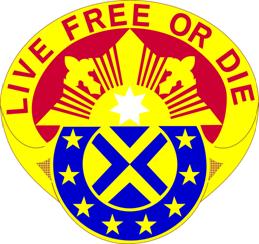 Headquarters and Headquarters Battery
**
Headquarters and Headquarters Battery
**  3rd Battalion, 197th Field Artillery Regiment, 197th FAR (High Mobility Artillery Rocket System (HIMARS)) (NH NG)
**
3rd Battalion, 197th Field Artillery Regiment, 197th FAR (High Mobility Artillery Rocket System (HIMARS)) (NH NG)
**  1st Battalion, 103rd Field Artillery Regiment, 103rd FAR (M777 howitzer, M777A2 Howitzer) (RI NG) (aligned with 197th Field Artillery Brigade (FAB))
**
1st Battalion, 103rd Field Artillery Regiment, 103rd FAR (M777 howitzer, M777A2 Howitzer) (RI NG) (aligned with 197th Field Artillery Brigade (FAB))
**  1st Battalion, 109th FAR (M109 howitzer, M109A6 Paladin) (PA NG) (aligned with 197th FAB)
**
1st Battalion, 109th FAR (M109 howitzer, M109A6 Paladin) (PA NG) (aligned with 197th FAB)
** 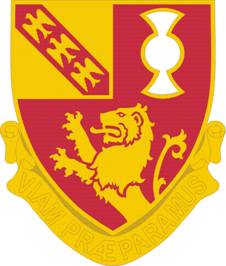 1st Battalion, 119th Field Artillery Regiment, 119th FAR (M777A2 Howitzer) (MI NG) (aligned with 197th FAB)
**
1st Battalion, 119th Field Artillery Regiment, 119th FAR (M777A2 Howitzer) (MI NG) (aligned with 197th FAB)
**  1st Battalion, 182nd FAR (HIMARS) (MI NG) (aligned with 197th FAB)
**
1st Battalion, 182nd FAR (HIMARS) (MI NG) (aligned with 197th FAB)
**  1st Battalion, 201st Field Artillery Regiment, 201st FAR (M109A6 Paladin) (WV NG) (aligned with 197th FAB)
**
1st Battalion, 201st Field Artillery Regiment, 201st FAR (M109A6 Paladin) (WV NG) (aligned with 197th FAB)
**  3643rd BSB (NH NG)
**
3643rd BSB (NH NG)
**  Battery E, 197th Field Artillery Regiment, 197th FAR (NH NG)
** 372nd Signal Company (NH NG)
*
Battery E, 197th Field Artillery Regiment, 197th FAR (NH NG)
** 372nd Signal Company (NH NG)
* 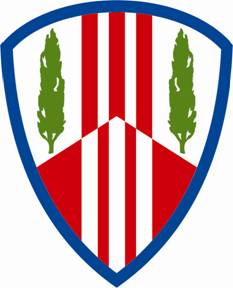 369th Sustainment Brigade
Note: Security and support (S&S) battalions are used in homeland security and drug interdiction roles. These units are currently not to be deployed outside the United States. S&S battalions are placed under a combat aviation brigade for organizational purposes.
369th Sustainment Brigade
Note: Security and support (S&S) battalions are used in homeland security and drug interdiction roles. These units are currently not to be deployed outside the United States. S&S battalions are placed under a combat aviation brigade for organizational purposes.
The Army Almanac: A Book of Facts Concerning the Army of the United States
' U.S. Government Printing Office, 1950 reproduced at the United States Army Center of Military History. *James J. Cooke, ''The Rainbow Division in the Great War, 1917–1919'', Greenwood Publishing Group, Incorporated 1994
42nd Division homepage
Rainbow Memories; Character Sketches of the 1st Battalion 166th Infantry Regiment
* {{DEFAULTSORT:042 Infantry divisions of the United States Army, 042nd Infantry Division, U.S. United States Army divisions during World War II, Infantry Division, U.S. 042 Divisions of the United States Army National Guard United States Army divisions of World War I Infantry divisions of the United States Army in World War II Military units and formations in New York (state) Military units and formations established in 1917 Military units and formations in Massachusetts
division
Division or divider may refer to:
Mathematics
*Division (mathematics), the inverse of multiplication
*Division algorithm, a method for computing the result of mathematical division
Military
*Division (military), a formation typically consisting ...
of the United States Army National Guard
The Army National Guard (ARNG), in conjunction with the Air National Guard, is an organized Militia (United States), militia force and a Reserve components of the United States Armed Forces, federal military reserve force of the United States A ...
. The 42nd Infantry Division has served in World War I
World War I (28 July 1914 11 November 1918), often abbreviated as WWI, was one of the deadliest global conflicts in history. Belligerents included much of Europe, the Russian Empire, the United States, and the Ottoman Empire, with fightin ...
, World War II
World War II or the Second World War, often abbreviated as WWII or WW2, was a world war that lasted from 1939 to 1945. It involved the vast majority of the world's countries—including all of the great powers—forming two opposin ...
and the Global War on Terrorism
The war on terror, officially the Global War on Terrorism (GWOT), is an ongoing international counterterrorism military campaign initiated by the United States following the September 11 attacks. The main targets of the campaign are militant ...
(GWOT). The division is currently headquartered at the Glenmore Road Armory in Troy
Troy ( el, Τροία and Latin: Troia, Hittite language, Hittite: 𒋫𒊒𒄿𒊭 ''Truwiša'') or Ilion ( el, Ίλιον and Latin: Ilium, Hittite language, Hittite: 𒃾𒇻𒊭 ''Wiluša'') was an ancient city located at Hisarlik in prese ...
, New York.
The division headquarters is a unit of the New York Army National Guard. The division currently includes Army National Guard units from fourteen different states, including Connecticut, Maine, Maryland, Massachusetts, New Hampshire, New Jersey, New York, Rhode Island, and Vermont. , 67 percent of 42ID soldiers are located in New York and New Jersey.
Rainbow Division
When the United States declared war on Germany in 1917, it federalized the National Guard and formed their units into divisions to quickly build up an Army. In addition,Douglas MacArthur
Douglas MacArthur (26 January 18805 April 1964) was an American military leader who served as General of the Army for the United States, as well as a field marshal to the Philippine Army. He had served with distinction in World War I, was C ...
, then a major
Major (commandant in certain jurisdictions) is a military rank of commissioned officer status, with corresponding ranks existing in many military forces throughout the world. When used unhyphenated and in conjunction with no other indicators ...
, suggested to William A. Mann, the head of the Militia Bureau
The National Guard Bureau is the federal instrument responsible for the administration of the National Guard established by the United States Congress as a joint bureau of the Department of the Army and the Department of the Air Force. It was crea ...
, that he form another division from the units of several states that were not assigned to divisions. Secretary of War Newton D. Baker
Newton Diehl Baker Jr. (December 3, 1871 – December 25, 1937) was an American lawyer, Georgist,Noble, Ransom E. "Henry George and the Progressive Movement." The American Journal of Economics and Sociology, vol. 8, no. 3, 1949, pp. 259–269. w ...
approved the proposal, and recalled Douglas MacArthur
Douglas MacArthur (26 January 18805 April 1964) was an American military leader who served as General of the Army for the United States, as well as a field marshal to the Philippine Army. He had served with distinction in World War I, was C ...
saying that such an organization would "stretch over the whole country like a rainbow." On 1 August 1917, the War Department directed the formation of a composite National Guard division, using units from 26 states and the District of Columbia
)
, image_skyline =
, image_caption = Clockwise from top left: the Washington Monument and Lincoln Memorial on the National Mall, United States Capitol, Logan Circle, Jefferson Memorial, White House, Adams Morgan, ...
. As a result, the 42nd Division came to be known as the "Rainbow Division". The name stuck, and MacArthur was promoted to colonel
Colonel (abbreviated as Col., Col or COL) is a senior military officer rank used in many countries. It is also used in some police forces and paramilitary organizations.
In the 17th, 18th and 19th centuries, a colonel was typically in charge of ...
as the division chief of staff.
Rainbow unit insignia

 The 42nd Division adopted a
The 42nd Division adopted a shoulder patch
A shoulder sleeve insignia (often abbreviated SSI) is an embroidered patch worn on some uniforms of the United States Army. It is used by major formations of the U.S. Army; each formation has a unique formation patch. The U.S. Army is unique amon ...
and distinctive unit insignia acknowledging the nickname. The original version of the patch symbolized a half arc rainbow and contained thin bands in multiple colors. During the latter part of World War I and post war occupation duty in Germany, the patch was changed to a quarter arc. According to the division's official history, Colonel William N. Hughes Jr., who had succeeded MacArthur as chief of staff, was credited with modifying the design to a quarter arc in an attempt to standardize it. Division lore includes the story that division commander Charles T. Menoher approved the patch after observing a rainbow shortly before a battle, deciding this was a favorable omen. According to World War I veterans of the 42nd Division, soldiers removed half the original symbol to memorialize the half of the division's soldiers who had been killed or wounded during the war. They also reduced the number of colors to just red, gold and blue bordered in green, to standardize the design and make the patch easier to reproduce.
Description: The 4th quadrant of a rainbow with three bands of color: red, gold and blue, each 3/8-inch (.95 cm) in width, outer radius 2 inches (5.08 cm); all within a 1/8-inch (.32 cm) Army green border.
Background: The shoulder sleeve insignia was originally authorized by telegram on 29 October 1918. It was officially authorized for wear on 27 May 1922. It was reauthorized for wear when the division was reactivated for World War II. On 8 September 1947, it was authorized for the post-World War II 42nd Infantry Division when it was reactivated as a National Guard unit.
World War I
The 42nd Division was assembled in August 1917 atCamp Mills
Camp Albert L. Mills (Camp Mills) was a military installation on Long Island, New York. It was located about ten miles from the eastern boundary of New York City on the Hempstead Plains within what is now the village of Garden City. In September ...
, New York, four months after the American entry into World War I
World War I (28 July 1914 11 November 1918), often abbreviated as WWI, was one of the deadliest global conflicts in history. Belligerents included much of Europe, the Russian Empire, the United States, and the Ottoman Empire, with fightin ...
. The 42nd arrived overseas to the Western Front of Belgium
Belgium, ; french: Belgique ; german: Belgien officially the Kingdom of Belgium, is a country in Northwestern Europe. The country is bordered by the Netherlands to the north, Germany to the east, Luxembourg to the southeast, France to th ...
and France in November 1917, one of the first divisions of the American Expeditionary Force
The American Expeditionary Forces (A. E. F.) was a formation of the United States Army on the Western Front of World War I. The A. E. F. was established on July 5, 1917, in France under the command of General John J. Pershing. It fought alon ...
(AEF) to do so, under the command of Major General
Major general (abbreviated MG, maj. gen. and similar) is a military rank used in many countries. It is derived from the older rank of sergeant major general. The disappearance of the "sergeant" in the title explains the apparent confusion of a ...
William A. Mann although he was soon to be replaced by Major General Charles T. Menoher, who remained in this position for the rest of the war. Colonel
Colonel (abbreviated as Col., Col or COL) is a senior military officer rank used in many countries. It is also used in some police forces and paramilitary organizations.
In the 17th, 18th and 19th centuries, a colonel was typically in charge of ...
Douglas MacArthur
Douglas MacArthur (26 January 18805 April 1964) was an American military leader who served as General of the Army for the United States, as well as a field marshal to the Philippine Army. He had served with distinction in World War I, was C ...
was the division's chief of staff until he later went on to command the 84th Brigade of the division. The AEF was commanded by General
A general officer is an Officer (armed forces), officer of highest military ranks, high rank in the army, armies, and in some nations' air forces, space forces, and marines or naval infantry.
In some usages the term "general officer" refers t ...
John Joseph Pershing
General of the Armies John Joseph Pershing (September 13, 1860 – July 15, 1948), nicknamed "Black Jack", was a senior United States Army officer. He served most famously as the commander of the American Expeditionary Forces (AEF) on the We ...
. After initially landing at St. Nazaire (France), the 42nd was temporarily located at Vaucouleurs
Vaucouleurs () is a commune in the Meuse department, northeastern France. It is situated on the river Meuse, approximately from Toul and Commercy.
History
Geoffrey de Geneville, 1st Baron Geneville (1225/33 – 21 October 1314) also known as G ...
, Lorraine
Lorraine , also , , ; Lorrain: ''Louréne''; Lorraine Franconian: ''Lottringe''; german: Lothringen ; lb, Loutrengen; nl, Lotharingen is a cultural and historical region in Northeastern France, now located in the administrative region of Gr ...
(France), from 7 November – 7 December 1917, to preliminarily train before transferring to another training
Training is teaching, or developing in oneself or others, any skills and knowledge or Physical fitness, fitness that relate to specific practicality, useful Competence (human resources), competencies. Training has specific goals of improving on ...
area between Lafauche and Rimaucourt. The day after Christmas, the 42nd, along with other divisions it had now linked up with, departed for another training
Training is teaching, or developing in oneself or others, any skills and knowledge or Physical fitness, fitness that relate to specific practicality, useful Competence (human resources), competencies. Training has specific goals of improving on ...
area near Rolampont, Langres
Langres () is a commune in France, commune in northeastern France. It is a Subprefectures in France, subprefecture of the Departments of France, department of Haute-Marne, in the Regions of France, region of Grand Est.
History
As the capital o ...
(France). French officers
An officer is a person who has a position of authority in a hierarchical organization. The term derives from Old French ''oficier'' "officer, official" (early 14c., Modern French ''officier''), from Medieval Latin ''officiarius'' "an officer," f ...
had been attached to the 42nd at Lafauche, Rimaucourt, and Rolampont as instructors in trench warfare
Trench warfare is a type of land warfare using occupied lines largely comprising military trenches, in which troops are well-protected from the enemy's small arms fire and are substantially sheltered from artillery. Trench warfare became a ...
who "...seemed, from Menoher and MacArthur's view, to think more highly of the Rainbow's performance than did Pershing and his Chaumont Chaumont can refer to:
Places Belgium
* Chaumont-Gistoux, a municipality in the province of Walloon Brabant
France
* Chaumont-Porcien, in the Ardennes ''département''
* Chaumont, Cher, in the Cher ''département''
* Chaumont-le-Bois, in the C� ...
staff".
"On February 13, 1918, the day that the -dayinspection
An inspection is, most generally, an organized examination or formal evaluation exercise. In engineering activities inspection involves the measurements, tests, and gauges applied to certain characteristics in regard to an object or activity. ...
headquarter's staff from Chaumont Chaumont can refer to:
Places Belgium
* Chaumont-Gistoux, a municipality in the province of Walloon Brabant
France
* Chaumont-Porcien, in the Ardennes ''département''
* Chaumont, Cher, in the Cher ''département''
* Chaumont-le-Bois, in the C� ...
] was completed, John J. Pershing, Pershing Military_order_(instruction), ordered the 42nd division to move to the Lunéville
Lunéville ( ; German, obsolete: ''Lünstadt'' ) is a commune in the northeastern French department of Meurthe-et-Moselle.
It is a subprefecture of the department and lies on the river Meurthe at its confluence with the Vezouze.
History
Lun ...
sector of southern Lorraine
Lorraine , also , , ; Lorrain: ''Louréne''; Lorraine Franconian: ''Lottringe''; german: Lothringen ; lb, Loutrengen; nl, Lotharingen is a cultural and historical region in Northeastern France, now located in the administrative region of Gr ...
for a month's training
Training is teaching, or developing in oneself or others, any skills and knowledge or Physical fitness, fitness that relate to specific practicality, useful Competence (human resources), competencies. Training has specific goals of improving on ...
at the front
Front may refer to:
Arts, entertainment, and media Films
* ''The Front'' (1943 film), a 1943 Soviet drama film
* ''The Front'', 1976 film
Music
* The Front (band), an American rock band signed to Columbia Records and active in the 1980s and e ...
with the French VII Corps". "Rainbow division entrained for the Lunéville
Lunéville ( ; German, obsolete: ''Lünstadt'' ) is a commune in the northeastern French department of Meurthe-et-Moselle.
It is a subprefecture of the department and lies on the river Meurthe at its confluence with the Vezouze.
History
Lun ...
sector on February 16, 1918, and it was joined by the 67th Field Artillery Brigade shortly thereafter. Rainbow's soldiers were distributed over the entire sixteen-mile front
Front may refer to:
Arts, entertainment, and media Films
* ''The Front'' (1943 film), a 1943 Soviet drama film
* ''The Front'', 1976 film
Music
* The Front (band), an American rock band signed to Columbia Records and active in the 1980s and e ...
of the sector, from Lunéville
Lunéville ( ; German, obsolete: ''Lünstadt'' ) is a commune in the northeastern French department of Meurthe-et-Moselle.
It is a subprefecture of the department and lies on the river Meurthe at its confluence with the Vezouze.
History
Lun ...
past St. Clément to Baccarat
Baccarat or baccara (; ) is a card game played at casinos. It is a comparing card game played between two hands, the "player" and the "banker". Each baccarat coup (round of play) has three possible outcomes: "player" (player has the higher score ...
. As far as administration, supply, and discipline were concerned, the division
Division or divider may refer to:
Mathematics
*Division (mathematics), the inverse of multiplication
*Division algorithm, a method for computing the result of mathematical division
Military
*Division (military), a formation typically consisting ...
was part of MG Hunter Liggett
Lieutenant General Hunter Liggett (March 21, 1857 − December 30, 1935) was a senior United States Army officer. His 42 years of military service spanned the period from the Indian campaigns to the trench warfare of World War I. Additionally, h ...
's I Corps I Corps, 1st Corps, or First Corps may refer to:
France
* 1st Army Corps (France)
* I Cavalry Corps (Grande Armée), a cavalry unit of the Imperial French Army during the Napoleonic Wars
* I Corps (Grande Armée), a unit of the Imperial French A ...
, A.E.F., but for combat
Combat ( French for ''fight'') is a purposeful violent conflict meant to physically harm or kill the opposition. Combat may be armed (using weapons) or unarmed ( not using weapons). Combat is sometimes resorted to as a method of self-defense, or ...
and training
Training is teaching, or developing in oneself or others, any skills and knowledge or Physical fitness, fitness that relate to specific practicality, useful Competence (human resources), competencies. Training has specific goals of improving on ...
purposes it was under Major General
Major general (abbreviated MG, maj. gen. and similar) is a military rank used in many countries. It is derived from the older rank of sergeant major general. The disappearance of the "sergeant" in the title explains the apparent confusion of a ...
Georges de Bazelaire
Georges de Bazelaire (January 30, 1858 – March 29, 1954) was a Major General in the French Army. During World War I, Bazelaire commanded the 135th Infantry Regiment, the 27th and 38th Infantry Divisions and the 7th Army Corps.
World War I
In 1 ...
, of the French VII Army Corps, with each of the 42nd's Regiments assigned to one of the French Divisions holding the sector. Each American
American(s) may refer to:
* American, something of, from, or related to the United States of America, commonly known as the "United States" or "America"
** Americans, citizens and nationals of the United States of America
** American ancestry, pe ...
battalion
A battalion is a military unit, typically consisting of 300 to 1,200 soldiers commanded by a lieutenant colonel, and subdivided into a number of companies (usually each commanded by a major or a captain). In some countries, battalions are ...
served one week at a time on the front
Front may refer to:
Arts, entertainment, and media Films
* ''The Front'' (1943 film), a 1943 Soviet drama film
* ''The Front'', 1976 film
Music
* The Front (band), an American rock band signed to Columbia Records and active in the 1980s and e ...
line, then spent the next week on the second line of defense, and the third week in reserve
Reserve or reserves may refer to:
Places
* Reserve, Kansas, a US city
* Reserve, Louisiana, a census-designated place in St. John the Baptist Parish
* Reserve, Montana, a census-designated place in Sheridan County
* Reserve, New Mexico, a US vi ...
Acute Shortage
In economics, a shortage or excess demand is a situation in which the demand for a product or service exceeds its supply in a market. It is the opposite of an excess supply ( surplus).
Definitions
In a perfect market (one that matches a sim ...
s of some types of equipment still existed, as evidenced, for example, by Menoher's order that troops
A troop is a military sub-subunit, originally a small formation of cavalry, subordinate to a squadron. In many armies a troop is the equivalent element to the infantry section or platoon. Exceptions are the US Cavalry and the King's Troop Ro ...
of a battalion
A battalion is a military unit, typically consisting of 300 to 1,200 soldiers commanded by a lieutenant colonel, and subdivided into a number of companies (usually each commanded by a major or a captain). In some countries, battalions are ...
leaving the front line
A front line (alternatively front-line or frontline) in military terminology is the position(s) closest to the area of conflict of an armed force's personnel and equipment, usually referring to land forces. When a front (an intentional or uninte ...
were to yield their Pistol
A pistol is a handgun, more specifically one with the chamber integral to its gun barrel, though in common usage the two terms are often used interchangeably. The English word was introduced in , when early handguns were produced in Europe, an ...
s to the men of the relieving battalion
A battalion is a military unit, typically consisting of 300 to 1,200 soldiers commanded by a lieutenant colonel, and subdivided into a number of companies (usually each commanded by a major or a captain). In some countries, battalions are ...
".
On 16 June 1918, General Pershing ordered the 42nd to entrain to "the Champagne
Champagne (, ) is a sparkling wine originated and produced in the Champagne wine region of France under the rules of the appellation, that demand specific vineyard practices, sourcing of grapes exclusively from designated places within it, spe ...
region east of Rheims
Reims ( , , ; also spelled Rheims in English) is the most populous city in the French department of Marne, and the 12th most populous city in France. The city lies northeast of Paris on the Vesle river, a tributary of the Aisne.
Founded by ...
(a sector comparatively more active than Baccarat
Baccarat or baccara (; ) is a card game played at casinos. It is a comparing card game played between two hands, the "player" and the "banker". Each baccarat coup (round of play) has three possible outcomes: "player" (player has the higher score ...
) to be assigned to General
A general officer is an Officer (armed forces), officer of highest military ranks, high rank in the army, armies, and in some nations' air forces, space forces, and marines or naval infantry.
In some usages the term "general officer" refers t ...
Henri Gouraud's Fourth Army"; relinquishing the current Baccarat
Baccarat or baccara (; ) is a card game played at casinos. It is a comparing card game played between two hands, the "player" and the "banker". Each baccarat coup (round of play) has three possible outcomes: "player" (player has the higher score ...
sector "to the relieving American
American(s) may refer to:
* American, something of, from, or related to the United States of America, commonly known as the "United States" or "America"
** Americans, citizens and nationals of the United States of America
** American ancestry, pe ...
77th and French 61st divisions".
During 1918, Rainbow division
Division or divider may refer to:
Mathematics
*Division (mathematics), the inverse of multiplication
*Division algorithm, a method for computing the result of mathematical division
Military
*Division (military), a formation typically consisting ...
, specifically with the 67th Field Artillery's "1650 projectiles" in the Bois des Chiens, engaged German forces with and experienced bombardment by German forces with deadly, poison-gas Bombardment
A bombardment is an attack by artillery fire or by dropping bombs from aircraft on fortifications, combatants, or towns and buildings.
Prior to World War I, the term was only applied to the bombardment of defenseless or undefended objects, ...
s, specifically with German 75-mm. and 105-mm. shells filled with palite and yperite
Mustard gas or sulfur mustard is a chemical compound belonging to a family of cytotoxic and blister agents known as mustard agents. The name ''mustard gas'' is technically incorrect: the substance, when dispersed, is often not actually a gas, b ...
(also known as Mustard gas). The 42nd took part in four major operations: the Champagne-Marne
The Second Battle of the Marne (french: Seconde Bataille de la Marne) (15 July – 18 July 1918) was the last major German offensive on the Western Front during the First World War. The attack failed when an Allied counterattack, supported by ...
, the Aisne-Marne
The Third Battle of the Aisne (french: 3e Bataille de l'Aisne) was a battle of the German spring offensive during World War I that focused on capturing the Chemin des Dames Ridge before the American Expeditionary Forces arrived completely in ...
, the Battle of Saint-Mihiel
The Battle of Saint-Mihiel was a major World War I battle fought from 12–15 September 1918, involving the American Expeditionary Forces (AEF) and 110,000 French troops under the command of General John J. Pershing of the United States against ...
, and the Meuse-Argonne Offensive. In total, it saw 264 days of combat.
 *Casualties: total 14,683 (KIA – 2,058; WIA – 12,625).
*Commanders: MG W. A. Mann (5 September 1917), Brig. Gen. Charles T. Menoher (19 December 1917), Maj. Gen. Charles D. Rhodes, (7 November 1918), Brig. Gen.
*Casualties: total 14,683 (KIA – 2,058; WIA – 12,625).
*Commanders: MG W. A. Mann (5 September 1917), Brig. Gen. Charles T. Menoher (19 December 1917), Maj. Gen. Charles D. Rhodes, (7 November 1918), Brig. Gen. Douglas MacArthur
Douglas MacArthur (26 January 18805 April 1964) was an American military leader who served as General of the Army for the United States, as well as a field marshal to the Philippine Army. He had served with distinction in World War I, was C ...
(10 November 1918), Maj. Gen. C. A. F. Flagler (22 November 1918), Brig. Gen. George G. Gatley (28 March 1919), Maj. Gen. George Windle Read
Major General George Windle Read (November 19, 1860 – November 6, 1934) was a senior United States Army officer who was prominent as a corps and division commander in World War I. Read also oversaw the departure of US forces from Europe ...
(10 April 1919 to Division's deactivation on 9 May 1919).
The 42nd Division
Division or divider may refer to:
Mathematics
*Division (mathematics), the inverse of multiplication
*Division algorithm, a method for computing the result of mathematical division
Military
*Division (military), a formation typically consisting ...
was demobilized in May 1919 at Camp Upton
Camp Upton was a port of embarkation of the United States Army during World War I. During World War II it was used to intern enemy aliens. It was located in Yaphank, New York in Suffolk County on Long Island, on the present-day location of Bro ...
, New York, Camp Grant, Illinois
Illinois ( ) is a U.S. state, state in the Midwestern United States, Midwestern United States. Its largest metropolitan areas include the Chicago metropolitan area, and the Metro East section, of Greater St. Louis. Other smaller metropolita ...
, Camp Dix
Fort Dix, the common name for the Army Support Activity (ASA) located at Joint Base McGuire-Dix-Lakehurst, is a United States Army post. It is located south-southeast of Trenton, New Jersey. Fort Dix is under the jurisdiction of the Air Force A ...
, New Jersey
New Jersey is a state in the Mid-Atlantic and Northeastern regions of the United States. It is bordered on the north and east by the state of New York; on the east, southeast, and south by the Atlantic Ocean; on the west by the Delaware ...
, and Camp Dodge
Camp Dodge is a military installation in the city of Johnston, Iowa, Johnston, Iowa. Centrally located near the capital of Iowa, it currently serves as the headquarters of the Iowa National Guard.
History
Original construction of the post began i ...
, Iowa
Iowa () is a state in the Midwestern region of the United States, bordered by the Mississippi River to the east and the Missouri River and Big Sioux River to the west. It is bordered by six states: Wisconsin to the northeast, Illinois to the ...
.
Order of battle
* Headquarters, 42ndDivision
Division or divider may refer to:
Mathematics
*Division (mathematics), the inverse of multiplication
*Division algorithm, a method for computing the result of mathematical division
Military
*Division (military), a formation typically consisting ...
(future General of the Army, then Colonel Douglas MacArthur, served as the chief of staff of the 42nd Division)
* 83rd Infantry Brigade
** 165th Infantry Regiment (formerly 69th Infantry, New York National Guard)
***''Notable members:'' Major
Major (commandant in certain jurisdictions) is a military rank of commissioned officer status, with corresponding ranks existing in many military forces throughout the world. When used unhyphenated and in conjunction with no other indicators ...
William "Wild Bill" Donovan, Chaplain
A chaplain is, traditionally, a cleric (such as a Minister (Christianity), minister, priest, pastor, rabbi, purohit, or imam), or a laity, lay representative of a religious tradition, attached to a secularity, secular institution (such as a hosp ...
Francis P. Duffy, Sergeant
Sergeant (abbreviated to Sgt. and capitalized when used as a named person's title) is a rank in many uniformed organizations, principally military and policing forces. The alternative spelling, ''serjeant'', is used in The Rifles and other uni ...
Joyce_Kilmer#War_years:_1917–1918, Joyce Kilmer
***''Significant events:'' Rouge Bouquet
**166th Infantry Regiment (United States), 166th Infantry Regiment (formerly 4th Infantry, Ohio National Guard)
** 150th Machine Gun Battalion (formerly Companies E, F, and G, 2nd Infantry, Wisconsin National Guard)
* 84th Infantry Brigade (this was the brigade that Brigadier General Douglas MacArthur commanded from July 1918 to November 1918)
**167th Infantry Regiment (United States), 167th Infantry Regiment (formerly 4th Infantry, Alabama National Guard)
**168th Infantry Regiment (United States), 168th Infantry Regiment (formerly 3rd Infantry, Iowa National Guard)
** 151st Machine Gun Battalion (formerly Companies B, C, and F, 2nd Infantry, Georgia National Guard)
* 67th Field Artillery Brigade
** 149th Field Artillery Regiment (75 mm) (formerly 1st Field Artillery, Illinois National Guard)
**150th Field Artillery Regiment (155 mm) (formerly 1st Field Artillery, Indiana National Guard)
** 151st Field Artillery Regiment (75 mm) (formerly 1st Field Artillery, Minnesota National Guard)
** 117th Trench Mortar Battery (formerly 3rd and 4th Companies, Coast Artillery, Maryland National Guard)
* 149th Machine Gun Battalion (formerly 3rd Battalion, 4th Infantry, Pennsylvania National Guard)
* 117th Engineer Regiment (formerly Separate Battalions, Engineers, California and South Carolina National Guards)
* 117th Field Signal Battalion (formerly 1st Battalion, Signal Corps, Missouri National Guard)
* Headquarters Troop, 42nd Division (formerly 1st Separate Troop, Cavalry, Louisiana National Guard)
* 117th Train Headquarters and Military Police (formerly 1st and 2nd Companies, Coast Artillery, Virginia National Guard)
** 117th Ammunition Train (formerly 1st Ammunition Train, Kansas National Guard)
** 117th Supply Train (formerly Supply Train, Texas National Guard)
** 117th Engineer Train (formerly Engineer Train, North Carolina National Guard)
** 117th Sanitary Train (165th–168th Ambulance Companies and Field Hospitals)
*** 165th Ambulance Company (formerly 1st Ambulance Company, Michigan National Guard)
*** 165th Field Hospital (formerly 1st Field Hospital, Washington, D.C. National Guard)
*** 166th Ambulance Company (formerly 1st Ambulance Company, New Jersey National Guard)
*** 166th Field Hospital (formerly 1st Field Hospital, Nebraska National Guard)
*** 167th Ambulance Company (formerly 1st Ambulance Company, Tennessee National Guard)
*** 167th Field Hospital (formerly 1st Field Hospital, Oregon National Guard)
*** 168th Ambulance Company (formerly 1st Ambulance Company, Oklahoma National Guard)
*** 168th Field Hospital (formerly 1st Field Hospital, Colorado National Guard
Interwar period
As the 42nd was a composite division, it was not contemplated for reorganization after World War I, and all of its former elements were assigned to other National Guard divisions or remained demobilized.World War II
*Activated: 14 July 1943 *Overseas: November 1944. *Campaigns: Ardennes-Alsace, Rhineland, Central Europe. *Days of combat: 106. *Prisoners of war taken: 59,128. *Presidential Unit Citation (United States), Presidential Unit Citation: 2. *Awards: Medal of Honor, MH-Vito R. Bertoldo, 1 ; DSC-4 ; DSM-1 ; SS-622; LM-9; SM-32; ; BSM-5,325 ; AM-104. *Commanders: Maj. Gen. Harry J. Collins commanded the 42ID during its entire period of federal service in World War II. *Deactivated: 29 June 1946 in Europe.Order of battle
* Headquarters, 42nd Infantry Division ** 222nd Infantry Regiment (United States), 222nd Infantry Regiment ** 232nd Infantry Regiment (United States), 232nd Infantry Regiment ** 242nd Infantry Regiment (United States), 242nd Infantry Regiment * Headquarters and Headquarters Battery, 42nd Infantry Division Artillery ** 232nd Field Artillery Battalion (105 mm) ** 392nd Field Artillery Battalion (105 mm) ** 402nd Field Artillery Battalion (105 mm) ** 542nd Field Artillery Battalion (155 mm) * 142nd Engineer Combat Battalion * 122nd Medical Battalion * 42nd Cavalry Reconnaissance Troop (Mechanized) * Headquarters, Special Troops, 42nd Infantry Division ** Headquarters Company, 42nd Infantry Division ** 742nd Ordnance Light Maintenance Company ** 42nd Quartermaster Company ** 132nd Signal Company ** Military Police Platoon ** Band * 42nd Counterintelligence Corps Detachment
Combat chronicle
When activated for World War II, the 42ID was a unique unit, as it was a reconstitution of the Rainbow Division from World War I. Army Ground Forces filled the division with personnel from every state, and from the division’s standup at Camp Gruber until the division stood down in Austria, at every formal assembly, the division displayed not only the national and divisional colors, but all 48 state colors (state flags). To emphasize the 42ID’s continued lineage from the 42ID of World War I, Maj. Gen. Harry J. Collins activated the unit on 14 July, the eve of the twenty-fifth anniversary of the Champagne-Marne campaign in France. Following training at Camp Gruber, Oklahoma and the journey to Europe, the three infantry regiments (222nd, 232nd, & 242nd) and a detachment of the 42ID Headquarters arrived in France at Marseille, 8–9 December 1944, and were formed into Task Force (TF) Linden, under Henning Linden, the Assistant Division Commander (ADC). As part of the Seventh United States Army, Seventh Army's VI Corps (United States), VI Corps, TF Linden entered combat in the vicinity of Strasbourg, relieving elements of the U.S. 36th Infantry Division, 36ID on 24 December 1944. While defending on a 31-mile sector along the Rhine north and south of Strasbourg in January 1945, TF Linden repulsed a number of enemy counterattacks at Hatten and other locations during the German "Operation Northwind" offensive. At the headquarters of 1st Battalion, 242nd Infantry, Private First Class Vito R. Bertoldo waged a 48-hour defense of the battalion command post, for which he received the Medal of Honor. When the command post was attacked by a German tank with its 88-mm. gun and machine gun fire, Bertoldo remained at his post, and with his own machine gun killed the occupants of the tank when they tried to remove mines which were blocking their advance. On 24 and 25 January 1945, in the Bois D’Ohlungen, and the vicinity of Schweighouse-sur-Moder and Neubourg, the 222nd Infantry Regiment (United States), 222nd Infantry Regiment held a position covering a front of 7,500 yards, three times the normal frontage for a regiment in defense. After a two-hour artillery bombardment, the 222nd Infantry Regiment was repeatedly attacked by elements of the German 7th Parachute Division (Germany), 7th Parachute, 47th Volks Grenadier Division, and the 25th Panzer Grenadier Division. During the ensuing struggle, one company of the 222nd Infantry was surrounded, but withdrew from their position and infiltrated back through the Germans to the regimental lines after exhausting all but 35 rounds of ammunition. For 24 hours, the battle raged, but the Germans were never able to break through the 222nd lines. For this action the 222nd Infantry Regiment was awarded the Presidential Unit Citation (2001). After these enemy attacks, TF Linden returned to reserve of the 7th Army and trained with the remainder of the 42ID which had arrived in the meantime. On 14 February 1945, the 42ID as a whole entered combat, taking up defensive positions near Haguenau in the Hardt Forest. After a month of extensive patrolling and active defense, the 42ID went on the offensive. On the night of 27 February the Germans laid down a heavy concentration of artillery and mortar fire and under this the elements of the 6th Mountain Division were withdrawn and replaced by the 221st Volksgrenadier Regiment. In the brief period this unit had been in the line, German soldiers had come to respect the Rainbow and fear its patrols and raids. "Is your Division a part of Roosevelt's SS?" asked one German when captured. The remark was passed along and men kidded each other about being in the Rainbow SS. The 42ID attacked through the Hardt Forest, broke through the Siegfried Line, 15–21 March 1945, cleared Dahn and Busenberg, and mopped up in that general area, while the 3rd Army created and expanded bridgeheads across the Rhine. Moving across the Rhine, 31 March 1945, the 42ID captured Wertheim am Main, 1 April 1945, and Würzburg, 2–6 April 1945, after a fierce battle. Schweinfurt fell next after hand-to-hand engagements, 9–12 April 1945. Fürth, near Nuremberg, put up fanatical resistance, but was taken, 18–19 April 1945, by the 42ID. 42ID's patrol arrested German war criminal Arthur Greiser. Greiser surrendered with Waffen-SS officer Heinz Reinefarth. On 25 April, the 42ID captured Donauwörth on the Danube, and, on 29 April 1945, liberated some 30,000 inmates at Dachau concentration camp.Casualties
*Total battle casualties: 3,971Army Battle Casualties and Nonbattle Deaths, Final Report (Statistical and Accounting Branch, Office of the Adjutant General, 1 June 1953) *Killed in action: 553 *Wounded in action: 2,212 *Missing in action: 31 *Prisoner of war: 1,175Assignments in ETO
*10 December 1944: U.S. Seventh Army, Seventh Army, 6th Army Group *15 December 1944: US Third Army, Third Army, 12th Army Group *24 December 1944: US VI Corps, VI Corps, Seventh Army, 6th Army Group *25 March 1945: XXI Corps (United States), XXI Corps, Seventh Army, 6th Army Group *19 April 1945: XV Corps (United States), XV Corps, Seventh Army, 6th Army Group The 42nd Division ended World War II on occupation duty in Austria and was inactivated by the end of January 1947.Cold War
On 13 October 1945, the War Department published a postwar policy statement for the entire Army. After the policy statement was published, the Army Staff prepared a postwar National Guard troop basis, which included twenty-four divisions, including the 42nd Infantry Division. Most soldiers considered the 42nd, initially organized with state troops in 1917, as a Guard formation. During the process, New York successfully petitioned the War Department for the 42nd Infantry Division. After the state governors formally notified the National Guard Bureau that they accepted the new troop allotments, the bureau authorized reorganization of the units with 100 percent of their officers and 80 percent of their enlisted personnel. By September 1947, the 42nd Division headquarters, along with all the other new Guard divisional headquarters, had received federal recognition. In April 1963, the 42nd Division was reorganized under the Reorganization Objective Army Division structure. From 1967 to 1969, the division was briefly part of the Selected Reserve Force, designed to reinforce the active army in Vietnam. In a 1968 reorganization, the division was split between the New York Army National Guard and the Pennsylvania Army National Guard. In 1973–74, the division was converted back into an all-New York organization. The 42nd Infantry Division absorbed the units of the 26th Infantry Division (United States), 26th Infantry Division and the U.S. 50th Armored Division, 50th Armored Division of the Massachusetts and New Jersey Army National Guard, respectively, in post-Cold War restructuring. All three divisions were severely understrength, so the assets of the three were combined into one. The 50th Brigade, created from the assets of the disbanding 50th Armored Division (United States), 50th Armored Division, was initially assigned to the 42nd Infantry Division as an armored brigade, but was transformed to an infantry brigade combat team (BCT) in the very first years of the 21st century as part of Army modularity. In the 1970s, the division headquarters was located at the armory at 125 West 14th Street in Manhattan. It was relocated in December 1989 to the Glenmore Armory in Troy, New York and remains there to this day.Global War on Terrorism
Since the 11 September attacks, the 42ID has been extensively involved in the war on terrorism, in both homeland security (HLS) and expeditionary operations. The 42ID's 1–101st Cavalry led the New York Army National Guard's efforts and provided security at Ground Zero during the rescue and then recovery efforts there. 42ID units from the New Jersey Army National Guard provided security at all the major river crossings into New York City and Newark International Airport in the months following 11 September 2001. The first major overseas effort of the 42ID was the deployment of elements of the 50th BCT/42ID to Guantanamo Bay Naval Base, Cuba. The 2–102nd Armor Battalion deployed as ILO MP's and served with the Joint Detention Operation Group in the detention facility. The 2nd Battalion, 113th Infantry deployed to Guantanamo Bay as well and provided security for the Joint Task Force at Camp Delta. While there elements of the 2nd Battalion, 102nd Armor supported the first military tribunals held at the Guantanamo Bay Detention Facility. Elements have also deployed to the Horn of Africa and Djibouti. New Jersey's 3/112th Field Artillery and 5/117th Cavalry deployed as an ILO Military Police Company with 89th Military Police Brigade (United States), 89th MP Brigade/759th Military Police Battalion; served in Sadr City, and worked alongside the First Cavalry Division. Stationed out of Camp Cuervo (Al Rustimayah) in Baghdad, platoons also worked with U.S. Marines in Fallujah. On 4 June 2004, SSG Carvill and SGT Duffy were killed and the following day the unit lost SPC Doltz and SSG Timoteo. The 2/108th Infantry deployed to Iraq in 2004. In 2004–05, the 1/69 Infantry served in Iraq, eventually providing security on the Baghdad International Airport (BIAP) Road. The 42nd Combat Aviation Brigade also deployed to Iraq during this period.
In 2004, the division headquarters and division troops of the 42nd Infantry Division deployed as part of Operation Iraqi Freedom (OIF) III, relieving the 1st Infantry Division (1ID). The division controlled the north-central Iraq area of operations. Serving as the command and control (C2) of Task Force Liberty, the 42ID took over responsibility for the area known as Multi-National Division North Central (MND-NC) including the provinces of Saladin Governorate, Saladin, Diyala Governorate, Diyala, At Ta'amim (Kirkuk Governorate, Kirkuk) and As Sulymaniah from the 1st Infantry Division on 14 February 2005. The 42ID directed the operations of: 1st BCT, 3rd Infantry Division (United States), 3ID; 3rd BCT, 3rd Infantry Division (United States), 3ID; the 278th RCT; 3rd- 313rd Field Artillery, 56th BCT (Texas Army National Guard); and the 116th Cavalry Brigade Combat Team (Idaho Army National Guard, Idaho, Oregon, and Montana Army National Guard). Soldiers conducted combat actions and raids, seized weapons caches, destroyed improvised explosive devices (IEDs), trained Iraqi army forces, and worked on reconstruction to ensure free elections. 1–69th Infantry of the 42ID manned the checkpoint where Italian SISMI officer Nicola Calipari was shot and killed.
Maj. Gen. Joseph J. Taluto, commanding general of the division during its deployment, commended the many contributions of the 42ID led Task Force Liberty. Vice Chief of Staff of the Army (VCSA), Gen. Richard Cody, saluted members of the 42ID at the unit's homecoming ceremony. The division's Headquarters and Headquarters Company was awarded the Army Meritorious Unit Commendation for its service in Iraq.
In 2008, 26 company-sized elements of the 50th Infantry Brigade Combat Team (United States), 50th Infantry Brigade Combat Team (IBCT), headquartered at Fort Dix, New Jersey, deployed to Iraq bringing the total number of NJ National Guard soldiers sent to Iraq and Afghanistan to over 3,200. These elements of the 50th IBCT were mobilized for one year, including stateside training and "boots on the ground" in theater. Premobilization training began in 2007 and took place in New Jersey, with further OIF specific preparation conducted at other Army installations out-of-state. Originally slated to deploy to Iraq in 2010, these elements deployed earlier as a result of changes needed to comply with new Department of Defense (DoD) policies. Earlier, in 2007, the DoD had reduced the amount of time units spend overseas in a combat theater, which in turn shifted mobilization schedules and required earlier deployments than anticipated. Elements of the 50th IBCT had deployed in support of Operation Iraqi Freedom (OIF) previously in 2004.
In 2008, the 27th Infantry Brigade Combat Team (IBCT), headquartered in Syracuse, New York, was mobilized and deployed to Afghanistan to train Afghan National Army (ANA) and police forces. Initial personnel from the 27th IBCT deployed in late 2007, with the majority of the approximately 1,700 service members deployed by mid-2008.
In conjunction around February 2008, soldiers of the 86th Infantry Brigade Combat Team were beginning to receive notification of their upcoming deployment. The Brigade Commander at the time was Colonel William F. Roy. In 2009, the brigade did a rotation at JRTC in Fort Polk, LA. In December 2009, the brigade was officially mobilized and to report to Camp Atterbury, IN. While in Indiana, the brigade trained and prepped for their future deployment to Afghanistan. After receiving numerous replacements and volunteer soldiers, the brigade was sent back to JRTC for one more rotation before they left the country.
The majority of the brigade landed in Afghanistan in early March. The brigade headquarters was on Bagram Airfield in RC-East. The brigade was tasked with numerous missions across eastern Afghanistan. The missions included partnering with the Afghan National Security Forces (ANSF), assisting in the Government of the Afghanistan, Islamic Republic of Afghanistan, and securing over 30,000 soldiers on Bagram Airfield while ensuring the base was continuing its daily operations. The brigade left Afghanistan in early December returning to Camp Atterbury, IN. The brigade was released from federal service and returned to the northeast to continue their respective state missions. Several component units of the brigade were awarded the Meritorious Unit Commendation for their service from 8 March 2010 – 4 December 2010 while deployed in support of Operation Enduring Freedom.
The 2/108th Infantry deployed to Iraq in 2004. In 2004–05, the 1/69 Infantry served in Iraq, eventually providing security on the Baghdad International Airport (BIAP) Road. The 42nd Combat Aviation Brigade also deployed to Iraq during this period.
In 2004, the division headquarters and division troops of the 42nd Infantry Division deployed as part of Operation Iraqi Freedom (OIF) III, relieving the 1st Infantry Division (1ID). The division controlled the north-central Iraq area of operations. Serving as the command and control (C2) of Task Force Liberty, the 42ID took over responsibility for the area known as Multi-National Division North Central (MND-NC) including the provinces of Saladin Governorate, Saladin, Diyala Governorate, Diyala, At Ta'amim (Kirkuk Governorate, Kirkuk) and As Sulymaniah from the 1st Infantry Division on 14 February 2005. The 42ID directed the operations of: 1st BCT, 3rd Infantry Division (United States), 3ID; 3rd BCT, 3rd Infantry Division (United States), 3ID; the 278th RCT; 3rd- 313rd Field Artillery, 56th BCT (Texas Army National Guard); and the 116th Cavalry Brigade Combat Team (Idaho Army National Guard, Idaho, Oregon, and Montana Army National Guard). Soldiers conducted combat actions and raids, seized weapons caches, destroyed improvised explosive devices (IEDs), trained Iraqi army forces, and worked on reconstruction to ensure free elections. 1–69th Infantry of the 42ID manned the checkpoint where Italian SISMI officer Nicola Calipari was shot and killed.
Maj. Gen. Joseph J. Taluto, commanding general of the division during its deployment, commended the many contributions of the 42ID led Task Force Liberty. Vice Chief of Staff of the Army (VCSA), Gen. Richard Cody, saluted members of the 42ID at the unit's homecoming ceremony. The division's Headquarters and Headquarters Company was awarded the Army Meritorious Unit Commendation for its service in Iraq.
In 2008, 26 company-sized elements of the 50th Infantry Brigade Combat Team (United States), 50th Infantry Brigade Combat Team (IBCT), headquartered at Fort Dix, New Jersey, deployed to Iraq bringing the total number of NJ National Guard soldiers sent to Iraq and Afghanistan to over 3,200. These elements of the 50th IBCT were mobilized for one year, including stateside training and "boots on the ground" in theater. Premobilization training began in 2007 and took place in New Jersey, with further OIF specific preparation conducted at other Army installations out-of-state. Originally slated to deploy to Iraq in 2010, these elements deployed earlier as a result of changes needed to comply with new Department of Defense (DoD) policies. Earlier, in 2007, the DoD had reduced the amount of time units spend overseas in a combat theater, which in turn shifted mobilization schedules and required earlier deployments than anticipated. Elements of the 50th IBCT had deployed in support of Operation Iraqi Freedom (OIF) previously in 2004.
In 2008, the 27th Infantry Brigade Combat Team (IBCT), headquartered in Syracuse, New York, was mobilized and deployed to Afghanistan to train Afghan National Army (ANA) and police forces. Initial personnel from the 27th IBCT deployed in late 2007, with the majority of the approximately 1,700 service members deployed by mid-2008.
In conjunction around February 2008, soldiers of the 86th Infantry Brigade Combat Team were beginning to receive notification of their upcoming deployment. The Brigade Commander at the time was Colonel William F. Roy. In 2009, the brigade did a rotation at JRTC in Fort Polk, LA. In December 2009, the brigade was officially mobilized and to report to Camp Atterbury, IN. While in Indiana, the brigade trained and prepped for their future deployment to Afghanistan. After receiving numerous replacements and volunteer soldiers, the brigade was sent back to JRTC for one more rotation before they left the country.
The majority of the brigade landed in Afghanistan in early March. The brigade headquarters was on Bagram Airfield in RC-East. The brigade was tasked with numerous missions across eastern Afghanistan. The missions included partnering with the Afghan National Security Forces (ANSF), assisting in the Government of the Afghanistan, Islamic Republic of Afghanistan, and securing over 30,000 soldiers on Bagram Airfield while ensuring the base was continuing its daily operations. The brigade left Afghanistan in early December returning to Camp Atterbury, IN. The brigade was released from federal service and returned to the northeast to continue their respective state missions. Several component units of the brigade were awarded the Meritorious Unit Commendation for their service from 8 March 2010 – 4 December 2010 while deployed in support of Operation Enduring Freedom.
Deaths of Esposito and Allen
Captain (United States O-3), Captain Phillip Esposito and First Lieutenant Louis Allen were killed on 7 June 2005, at Forward Operating Base Danger in Tikrit, Iraq by a M18A1 Claymore mine placed in the window of Esposito's office. Esposito was commander, Headquarters and Headquarters Company, 42ID. Allen had recently arrived in Iraq to serve as Esposito's executive officer, or second in command. Military investigators determined that the mine was deliberately placed and detonated with the intention of killing Esposito and Allen. Staff Sergeant Alberto B. Martinez from the officers' unit was charged in the killing but was acquitted in a court-martial trial at Fort Bragg (North Carolina), Fort Bragg, North Carolina, on 4 December 2008. The case was one of only two publicly announced alleged fragging incidents among U.S. forces during the Iraq War. Subsequently, Siobhan Esposito and Barbara Allen, the widows of the officers, continued to pursue justice for their husbands' deaths, pushing for the military to strictly enforce regulations that prohibit threats against superiors and require soldiers to report violations of "good order and discipline."David Zucchino, "Widows pursue justice in soldiers' slayings"''Los Angeles Times'', 8 April 2010, 15 March 2013
Homeland security
During the Cold War and through the present, the 42ID and its soldiers have been regularly called upon for homeland security missions including disaster relief (such as Hurricane Katrina, Hurricane Floyd), emergency preparedness (such as Y2K missions), airport security, critical infrastructure protection, border security, bridge and tunnel security, as well as rail/train station security. Several first responders to the 11 September 2001 attacks were members of the 42ID, and led much of the military support to the relief and recovery efforts. The 42ID was part of the relief team for the duration of the effort at Ground Zero in New York City. The 42ID has also been actively engaged in missions supporting Operation Noble Eagle. In October 2005, elements of the 50th Armored Brigade (United States), 50th Armored Brigade/42 ID were activated for Operation Hurricane Katrina relief in the city of New Orleans. The 2–102nd Armor and the 1–114th Infantry were called to active duty and the combined unit was dispatched to Louisiana to provide security for FEMA. The 50th Brigade arrived at Belle Chase Naval Air Station and from there went to the New Orleans Convention Center. From there, the elements of the 42nd ID sent teams to various parts of the city on various missions of security ranging from roving patrol to security escort for the New Orleans Fire Department and other relief agenciesCurrent structure

 Special Troops Battalion, 42nd Infantry Division
*
Special Troops Battalion, 42nd Infantry Division
*  2nd Squadron, 101st Cavalry Regiment (United States), 101st Cavalry Regiment (Reconnaissance, surveillance, and target acquisition (United States), Reconnaissance Surveillance and Target Acquisition (RSTA))
**
2nd Squadron, 101st Cavalry Regiment (United States), 101st Cavalry Regiment (Reconnaissance, surveillance, and target acquisition (United States), Reconnaissance Surveillance and Target Acquisition (RSTA))
**  1st Battalion, 69th Infantry Regiment (New York), 69th Infantry Regiment
**
1st Battalion, 69th Infantry Regiment (New York), 69th Infantry Regiment
**  2nd Battalion, 108th Infantry Regiment (United States), 108th Infantry Regiment
**
2nd Battalion, 108th Infantry Regiment (United States), 108th Infantry Regiment
**  1st Battalion, 182nd Infantry Regiment (United States), 182nd Infantry Regiment (Massachusetts National Guard, MA NG)
**
1st Battalion, 182nd Infantry Regiment (United States), 182nd Infantry Regiment (Massachusetts National Guard, MA NG)
**  1st Battalion, 258th Field Artillery Regiment (United States), 258th Field Artillery Regiment (FAR)
** 152nd Brigade Engineer Battalion (BEB)
** 427th Brigade Support Battalion (BSB)
*
1st Battalion, 258th Field Artillery Regiment (United States), 258th Field Artillery Regiment (FAR)
** 152nd Brigade Engineer Battalion (BEB)
** 427th Brigade Support Battalion (BSB)
*  44th Infantry Brigade Combat Team (United States), 44th IBCT (New Jersey National Guard, NJ NG)
**HHC
**
44th Infantry Brigade Combat Team (United States), 44th IBCT (New Jersey National Guard, NJ NG)
**HHC
**  1st Squadron, 102nd Cavalry Regiment (United States), 102nd Cavalry Regiment (RSTA)
**
1st Squadron, 102nd Cavalry Regiment (United States), 102nd Cavalry Regiment (RSTA)
**  2nd Battalion, 113th Infantry Regiment (United States), 113th Infantry Regiment
**
2nd Battalion, 113th Infantry Regiment (United States), 113th Infantry Regiment
**  1st Battalion, 114th Infantry Regiment (United States), 114th Infantry Regiment
**
1st Battalion, 114th Infantry Regiment (United States), 114th Infantry Regiment
**  1st Battalion, 181st Infantry Regiment (United States), 181st Infantry Regiment (Massachusetts National Guard, MA NG)
**
1st Battalion, 181st Infantry Regiment (United States), 181st Infantry Regiment (Massachusetts National Guard, MA NG)
**  3rd Battalion, 112th Field Artillery Regiment (United States), 112th FAR
** 104th BEB
** 250th BSB
*
3rd Battalion, 112th Field Artillery Regiment (United States), 112th FAR
** 104th BEB
** 250th BSB
* 86th Infantry Brigade Combat Team, 86th IBCT (Mountain) (Vermont National Guard, VT NG)
**
86th Infantry Brigade Combat Team, 86th IBCT (Mountain) (Vermont National Guard, VT NG)
** HHC
**
HHC
** 1st Squadron, 172nd Cavalry Regiment (RSTA)
**
1st Squadron, 172nd Cavalry Regiment (RSTA)
** 1st Battalion, 102nd Infantry Regiment (United States), 102nd Infantry Regiment (Mountain) (Connecticut National Guard, CT NG)
**
1st Battalion, 102nd Infantry Regiment (United States), 102nd Infantry Regiment (Mountain) (Connecticut National Guard, CT NG)
** 1st Battalion, 157th Infantry Regiment (United States), 157th Infantry Regiment (Mountain) (Colorado National Guard, CO NG)
**
1st Battalion, 157th Infantry Regiment (United States), 157th Infantry Regiment (Mountain) (Colorado National Guard, CO NG)
** 3rd Battalion, 172nd Infantry Regiment (United States), 172nd Infantry Regiment (Mountain) (Vermont National Guard, VT NG & New Hampshire National Guard, NH NG & Maine National Guard, ME NG)
**
3rd Battalion, 172nd Infantry Regiment (United States), 172nd Infantry Regiment (Mountain) (Vermont National Guard, VT NG & New Hampshire National Guard, NH NG & Maine National Guard, ME NG)
** 1st Battalion, 101st Field Artillery Regiment, 101st FAR (Massachusetts National Guard, MA NG & Vermont National Guard, VT NG)
**
1st Battalion, 101st Field Artillery Regiment, 101st FAR (Massachusetts National Guard, MA NG & Vermont National Guard, VT NG)
** 572nd BEB
**
572nd BEB
** 186th BSB
* 42nd Combat Aviation Brigade, Combat Aviation Brigade, 42d Infantry Division (CAB) (New York Army National Guard, NY NG)
** HHC
**
186th BSB
* 42nd Combat Aviation Brigade, Combat Aviation Brigade, 42d Infantry Division (CAB) (New York Army National Guard, NY NG)
** HHC
**  3rd Battalion (General Support), 126th Aviation Regiment (United States), 126th Aviation Regiment (Massachusetts National Guard, MA NG & Vermont National Guard, VT NG & Maryland National Guard, MD NG)
**
3rd Battalion (General Support), 126th Aviation Regiment (United States), 126th Aviation Regiment (Massachusetts National Guard, MA NG & Vermont National Guard, VT NG & Maryland National Guard, MD NG)
**  1st Battalion (Attack/Recon), 151st Aviation Regiment (United States), 151st Aviation Regiment
**
1st Battalion (Attack/Recon), 151st Aviation Regiment (United States), 151st Aviation Regiment
**  3rd Battalion (Assault), 142nd Aviation Regiment (United States), 142nd Aviation Regiment
** 642nd Aviation Support Battalion
3rd Battalion (Assault), 142nd Aviation Regiment (United States), 142nd Aviation Regiment
** 642nd Aviation Support Battalion
Attached units
* HHC
**
HHC
**  Network Signal Company
*
Network Signal Company
*  197th Field Artillery Brigade (NH ARNG)
**
197th Field Artillery Brigade (NH ARNG)
**  Headquarters and Headquarters Battery
**
Headquarters and Headquarters Battery
**  3rd Battalion, 197th Field Artillery Regiment, 197th FAR (High Mobility Artillery Rocket System (HIMARS)) (NH NG)
**
3rd Battalion, 197th Field Artillery Regiment, 197th FAR (High Mobility Artillery Rocket System (HIMARS)) (NH NG)
**  1st Battalion, 103rd Field Artillery Regiment, 103rd FAR (M777 howitzer, M777A2 Howitzer) (RI NG) (aligned with 197th Field Artillery Brigade (FAB))
**
1st Battalion, 103rd Field Artillery Regiment, 103rd FAR (M777 howitzer, M777A2 Howitzer) (RI NG) (aligned with 197th Field Artillery Brigade (FAB))
**  1st Battalion, 109th FAR (M109 howitzer, M109A6 Paladin) (PA NG) (aligned with 197th FAB)
**
1st Battalion, 109th FAR (M109 howitzer, M109A6 Paladin) (PA NG) (aligned with 197th FAB)
**  1st Battalion, 119th Field Artillery Regiment, 119th FAR (M777A2 Howitzer) (MI NG) (aligned with 197th FAB)
**
1st Battalion, 119th Field Artillery Regiment, 119th FAR (M777A2 Howitzer) (MI NG) (aligned with 197th FAB)
**  1st Battalion, 182nd FAR (HIMARS) (MI NG) (aligned with 197th FAB)
**
1st Battalion, 182nd FAR (HIMARS) (MI NG) (aligned with 197th FAB)
**  1st Battalion, 201st Field Artillery Regiment, 201st FAR (M109A6 Paladin) (WV NG) (aligned with 197th FAB)
**
1st Battalion, 201st Field Artillery Regiment, 201st FAR (M109A6 Paladin) (WV NG) (aligned with 197th FAB)
**  3643rd BSB (NH NG)
**
3643rd BSB (NH NG)
**  Battery E, 197th Field Artillery Regiment, 197th FAR (NH NG)
** 372nd Signal Company (NH NG)
*
Battery E, 197th Field Artillery Regiment, 197th FAR (NH NG)
** 372nd Signal Company (NH NG)
*  369th Sustainment Brigade
Note: Security and support (S&S) battalions are used in homeland security and drug interdiction roles. These units are currently not to be deployed outside the United States. S&S battalions are placed under a combat aviation brigade for organizational purposes.
369th Sustainment Brigade
Note: Security and support (S&S) battalions are used in homeland security and drug interdiction roles. These units are currently not to be deployed outside the United States. S&S battalions are placed under a combat aviation brigade for organizational purposes.
Commanders of the 42nd Infantry Division
Notable former members
*Robert Galbraith Allison, World War I, director of the budget, state of Tennessee *Vito Bertoldo, World War II, Medal of Honor *Boris Bittker, World War II, law professor *George Emerson Brewer, World War I, surgeon *Joseph W. Brooks, World War I, college football coach *Wilber M. Brucker, World War I, United States Secretary of the Army *Robert Burns (Iowa politician), Robert Burns, World War II, member of the Iowa Senate *Frank Merrill Caldwell, World War I, 83rd Infantry Brigade commander *Kenneth John Conant, World War I, architectural historian *Hamilton Corbett, World War I, college football player and businessman *Scott Corbett, World War II, journalist and author . John Monaghan. ''The Providence Journal''. March 9, 2006. Archived 2008-04-17. Retrieved 2013-06-28. *W. Arthur Cunningham, World War I, New York City Comptroller *Roger W. Cutler Jr., World War II, athlete, attorney and banker *Reginald B. DeLacour, World War I, adjutant general of Connecticut *John L. DeWitt, World War I, U.S. Army General (United States), four-star general *Michael A. Donaldson, World War I, Medal of Honor *William J. Donovan, World War I, Medal of Honor * Francis P. Duffy, World War I, Catholic priest and army chaplain *Francis J. Evon, Jr., Operation Enduring Freedom, Connecticut Adjutant General *Samuel Warren Hamilton, World War I, psychiatrist *Thomas S. Hammond, World War I, business executive *Thomas T. Handy, World War I, U.S. Army four-star general *Thomas Francis Hickey (United States Army officer), Thomas Francis Hickey, World War II, U.S. Army lieutenant general *Lisa J. Hou, Operation Iraqi Freedom, Adjutant general of the New Jersey National Guard *Benson W. Hough, World War I, judge of the United States District Court for the Southern District of Ohio *Kevin Interdonato, Operation Iraqi Freedom, actor *Olin D. Johnston, World War I, U.S. senator *Louis Jordan (American football), Louis Jordan, World War I, college football player *Joyce Kilmer, World War I, journalist and poet *Rory Lancman, Cold War, member of the New York State Assembly and New York City Council *Bruce M. Lawlor, Global War on Terrorism, U.S. Army major general *George E. Leach, World War I, mayor of Minneapolis *Michael Joseph Lenihan, World War I, 83rd Brigade commander *Ralph Linton, World War I, anthropologist *Charles MacArthur, World War I, author *Sidney E. Manning, World War I, Medal of Honor *Jeff W. Mathis III, Cold War, U.S. Army major general *Moose McCormick, World War I, professional baseball player, director of the United States Army Air Forces during World War II *Thomas C. Neibaur, World War I, Medal of Honor *Donald A. Quarles, World War I, United States Deputy Secretary of Defense *Richard W. O'Neill, World War I, Medal of Honor *Todd Pillion, Operation Iraqi Freedom, member of the Senate of Virginia *B. Carroll Reece, World War I, U.S. congressman *Henry J. Reilly, World War I, author and journalist *Louis W. Ross, World War I, architect *Richard J. Tallman, World War II, U.S. Army brigadier general *John C. F. Tillson, World War II, U.S. Army major general *Robert Tyndall, World War I, List of mayors of Indianapolis, mayor of Indianapolis *James Ronald Warren, World War II, Historian *Emmett Watson (illustrator), Emmett Watson, World War I, illustrator *Arthur Whittemore, World War I, associate justice of the Massachusetts Supreme Judicial CourtIn popular culture
The 42nd Infantry Division was featured in the 2008 monster film ''Cloverfield''.See also
*Army National Guard
The Army National Guard (ARNG), in conjunction with the Air National Guard, is an organized Militia (United States), militia force and a Reserve components of the United States Armed Forces, federal military reserve force of the United States A ...
*Battle of the Bulge
*United States National Guard
References
Sources
*The Army Almanac: A Book of Facts Concerning the Army of the United States
' U.S. Government Printing Office, 1950 reproduced at the United States Army Center of Military History. *James J. Cooke, ''The Rainbow Division in the Great War, 1917–1919'', Greenwood Publishing Group, Incorporated 1994
External links
42nd Division homepage
Rainbow Memories; Character Sketches of the 1st Battalion 166th Infantry Regiment
* {{DEFAULTSORT:042 Infantry divisions of the United States Army, 042nd Infantry Division, U.S. United States Army divisions during World War II, Infantry Division, U.S. 042 Divisions of the United States Army National Guard United States Army divisions of World War I Infantry divisions of the United States Army in World War II Military units and formations in New York (state) Military units and formations established in 1917 Military units and formations in Massachusetts